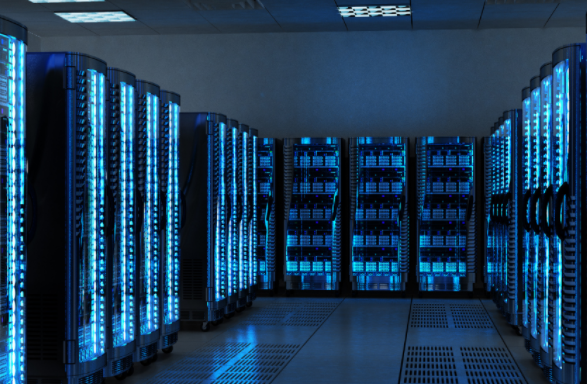
It is hard to imagine navigating the COVID-19 pandemic without the internet which allowed the world to work, learn, play, and connect while staying physically remote.This modern digital life could not be possible without millions of data centers across the globe.
“By powering all that makes up the internet, data centers were recognized throughout 2020 for their crucial presence in all lives, and for maintaining communication and knowledge during a period of sudden change for humanity,” says the Cushman & Wakefield “2021 Data Center Global Market Comparison”.
Cushman & Wakefield says that data centers, “once an afterthought for global enterprises, are now a cornerstone of the information economy, and well over $100 billion has poured into the asset class over the past decade.
Data Centers are Growing
While the economic reality of 2020 slowed data center growth, according to the DellOro Group research, the sector is poised to rebound with double digit growth in 2021.
“2020 has been a tumultuous year in which the industry has to reevaluate its data center deployment strategy. While COVID-19 and the ensuing recession did weigh down on projected 2020 data center capex growth to just 2 percent, the slowdown in spending was not as much as originally feared,” the DellOro report said. “Some Cloud service providers have continued to expand their infrastructure to support increased internet usage and work-from-home dynamics, while a great deal of uncertainty persists in other industry sectors. Our 2021 outlook is more optimistic, with a data center capex projection of 10 percent.”
Data Center are Evolving
Not only are data centers growing but they are evolving from the traditional enterprise data center into other models including colocation, hyperscale, carrier hotels and edge data centers.
“While high-end enterprises are likely to invest in a hybrid cloud strategy, small and medium enterprises have been making a secular shift to cloud computing,” said the DellOro report. “This trend has materialized, simply because it is less expensive for smaller enterprises to rely on public cloud, as opposed to building and operating their own data centers.”
Some analysts say to not expect a shift overnight from the traditional enterprise data center to other models but look for gradual changes.
“All of which is why the data center – that part of the IT operation that is too important to let go – will remain central to IT strategy for many companies,” writes Cathy Gadecki, senior director, enterprise cloud marketing, Juniper Networks. “For most enterprises, digital transformation is a long evolution, a blended approach that will see phased migration of applications and data to the cloud and a mix of legacy and cloud-native services for the foreseeable future.”
Part of the data center processing shifting from enterprise is migrating to the edge, but it can be confusing when we talk about enterprise vs. edge data centers, so let’s take a closer look at each which share similar characteristics but serve different purposes.
The Basics of an Enterprise Data Center
Enterprise data centers are owned and operated by companies and can be housed on-premises in dedicated rooms or floors of buildings or can be in dedicated facilities off-site.
“Like many industry terms, the word “enterprise” gets thrown around quite a lot and attached to several different concepts. Although sometimes (and often incorrectly) used interchangeably with hyperscale data centers, an enterprise facility is defined more by its purpose and ownership than by its size and capacity,” writes Ernie Sampera, Chief Marketing Officer at vXchnge. “Tech giants like Google and Facebook make extensive use of enterprise data centers. However, their massive hyperscale data centers are not the most common form of private facility.”
Gartner Research VP David Cappuccio estimated in his seminal 2018 article “The Data Center is Dead” that 80 percent of enterprises will have shut down their traditional data centers by 2025 – up from 10 percent at the time.
The Pros and Cons of Enterprise Data Centers
Sampera says the two main benefits of an enterprise data center are:
- Compatibility: Enterprise data centers can be designed and operated for maximum compatibility with a company's enterprise applications and processes.
- IT Visibility: Companies can track their bandwidth, power usage, and make sure monitoring tools are in place to protect their data.
ZD Net adds to the list with six reasons why companies hang onto their enterprise data centers:
- Control: Direct management of mission-critical IT assets.
- Security and Governance: Especially in regulated industries such as finance, healthcare, and insurance.
- Lack of Direct Relationships with Vendors: Cloud-based software services may not fully own and operate their own data centers.
- Safekeeping Intellectual Property: Keeping mission-critical systems in-house.
- Uptime and Disaster Recovery: Concern of vendor hardware and software failure.
- Internal Skill Sets and Support: Maintaining own IT staff as a competitive advantage.
On the flip side, the cons of having an enterprise data center include:
- Costs: Maintaining the building space and infrastructure to run its own data centers can be a big financial investment for companies.
- Lack of Future Proofing: There is a reason that enterprise data centers are often called legacy infrastructure because it is not always financially feasible for companies to continuously upgrade their equipment with the latest technology.
- Data Delays, Reduced Latency: Having all data processing done at a centralized location can risk communication delays when usage overloads infrastructure, and data can reach users at a slower rate when the processing is done further away from devices.
The Basics of an Edge Data Center
Edge data centers are smaller facilities located close to the users, applications and devices where the data is being generated and consumed.
“Typically positioned in growing markets or on the outskirts of existing networks, edge data centers allow companies to deliver content and services to local users with minimal latency,” writes Sampera.
Edge data centers, according to TIA, can take different forms including placement in:
- Modified cell tower shelter
- Modified cabinet
- Drop and plug shelter
- Drop and plug cabinet
- IDF closet in a building
- Co-located in a central office or data center
- In a box on a light pole or similar location
The Pros and Cons of Edge Data Centers
Pwc says edge data centers will triple by 2024, driven in part by the arrival of 5G, proliferation of IoT devices, and other emerging technologies such as AR and VR, thanks to the following advantages:
- Spread Traffic: Multiple edge data centers can help distribute heavy traffic loads instead of relying on one data center running at near peak capacity.
- Lower Latency: Delay between user request and response is lower with edge data centers closer to where data is generated and consumed.
- Increased Reliability: Single point of failure is eliminated by using edge data centers as part of a hybrid or multi-data center strategy.
- Reduced Costs/Predictable Costs: Edge data centers can cost less to maintain than traditional enterprise data centers. When outsourced, it is easier to budget monthly IT costs.
The downside of edge data centers can include:
- Compatibility: Edge data centers may not be compatible with legacy enterprise center architecture and operating systems.
- Lack of Control: If the edge data center is outsourced then the company has less IT control over such issues as server loads and power consumption.
- Lack of Customization: By not operating and owning data center infrastructure, the ability to customize the third-party edge data center may be lacking, resulting in suboptimal processing outcomes.
Contact DCS today to find out how we design, manufacture, and install fiber connectivity solutions for data centers ranging from the edge to enterprise to hyperscale.
References
https://cushwake.cld.bz/2021-Data-Center-Global-Market-Comparison/2/
https://www.cushmanwakefield.com/en/insights/global-data-center-market-comparison
https://www.delloro.com/predictions-2021-data-center-infrastructure/
https://blog.datacentersys.com/the-5-main-types-of-data-centers
https://www.datacenterdynamics.com/en/opinions/the-data-center-is-evolving/
https://www.vxchnge.com/blog/enterprise-vs-edge-data-center
https://blogs.gartner.com/david_cappuccio/2018/07/26/the-data-center-is-dead/
https://www.zdnet.com/article/six-reasons-why-companies-hang-on-to-their-data-centers/
https://www.pwc.com/us/en/industries/capital-projects-infrastructure/library/edge-data-centers.html
Subscribe to News
Recent posts
LATEST NEWS
Monday August 5, 2024
Friday February 9, 2024
Monday September 9, 2024







